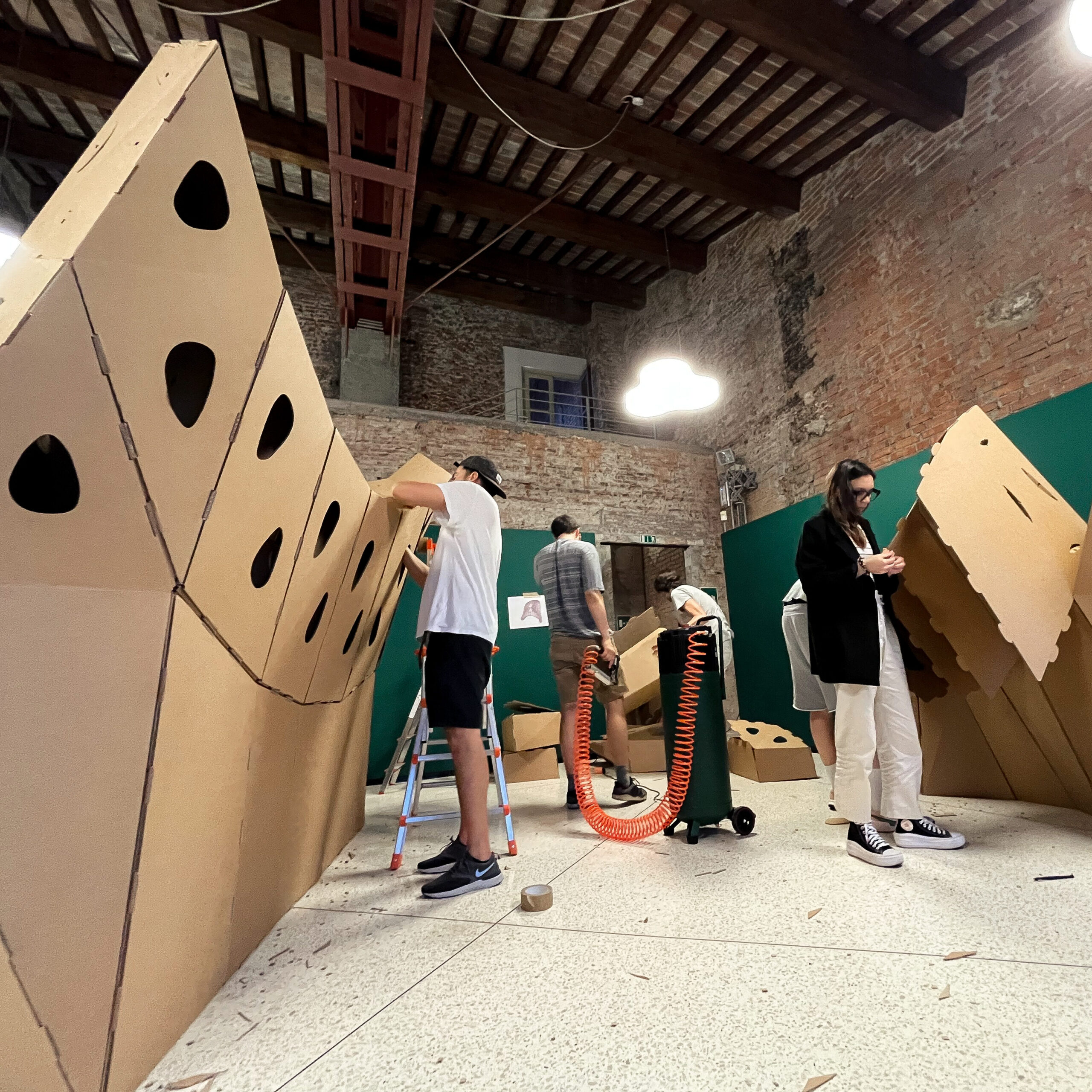
The installation Design Temporariness! is part of Lucca Biennale Cartasia 2024, exploring new frontiers of temporary and sustainable architecture. This project merges computational design, modularity, and recyclable materials, demonstrating how technological innovation can reduce resource consumption and promote circularity.

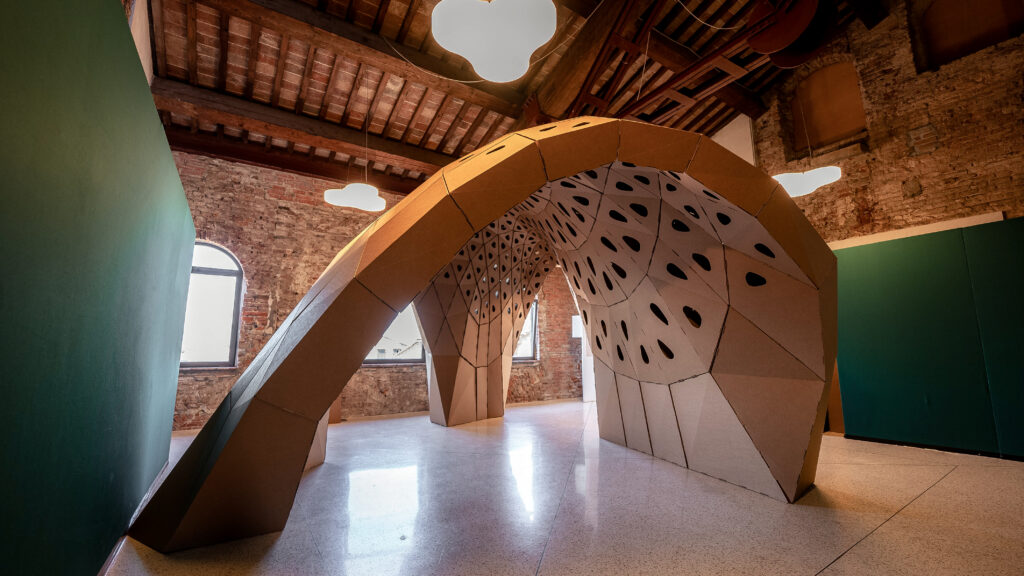
Located within Palazzo Guinigi, the pavilion features a fluid and organic volume, entirely made of honeycomb cardboard and assembled without glue or complex joints, thanks to a friction-based connection system. It achieves a balance between stability and lightness through digital fabrication strategies and structural optimization.
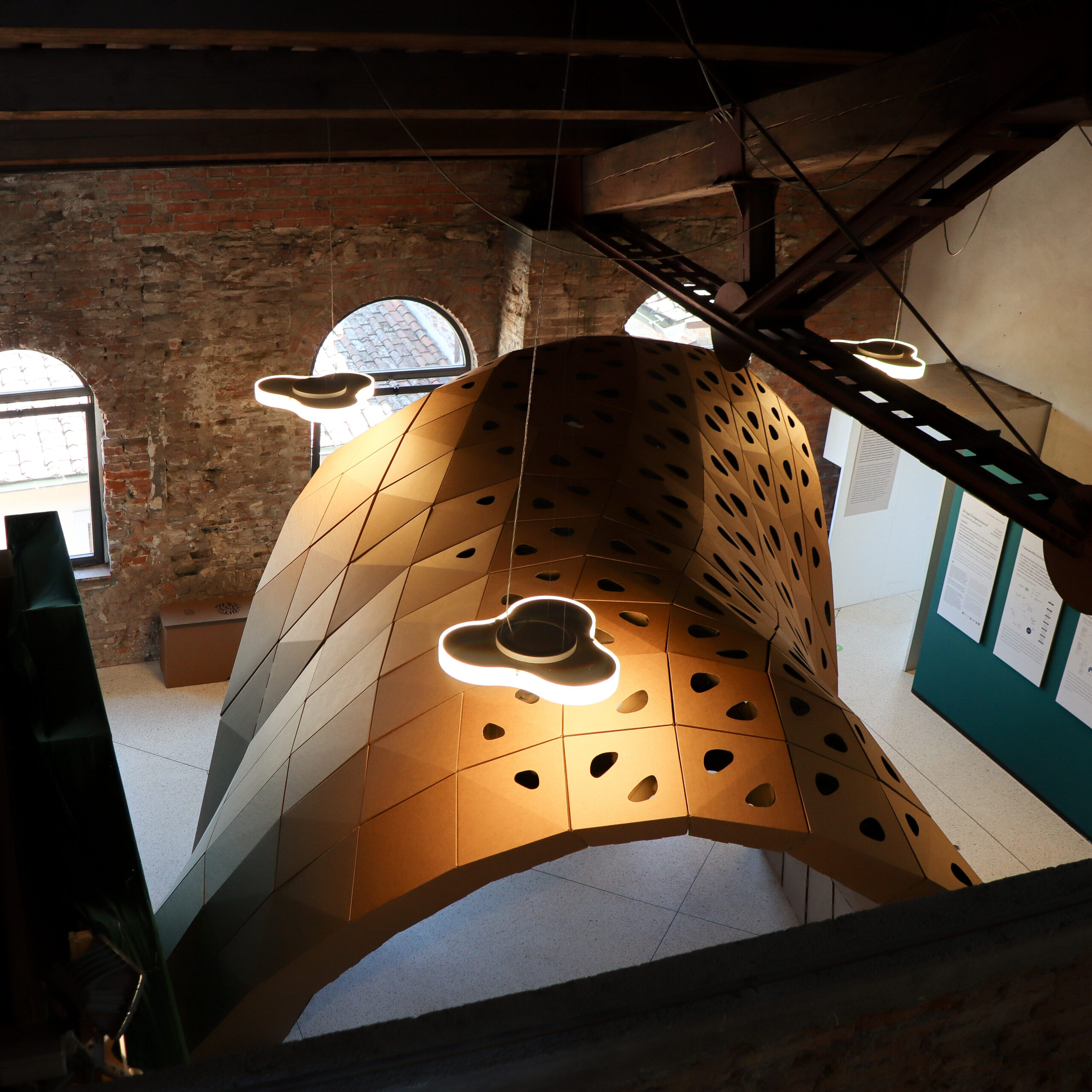
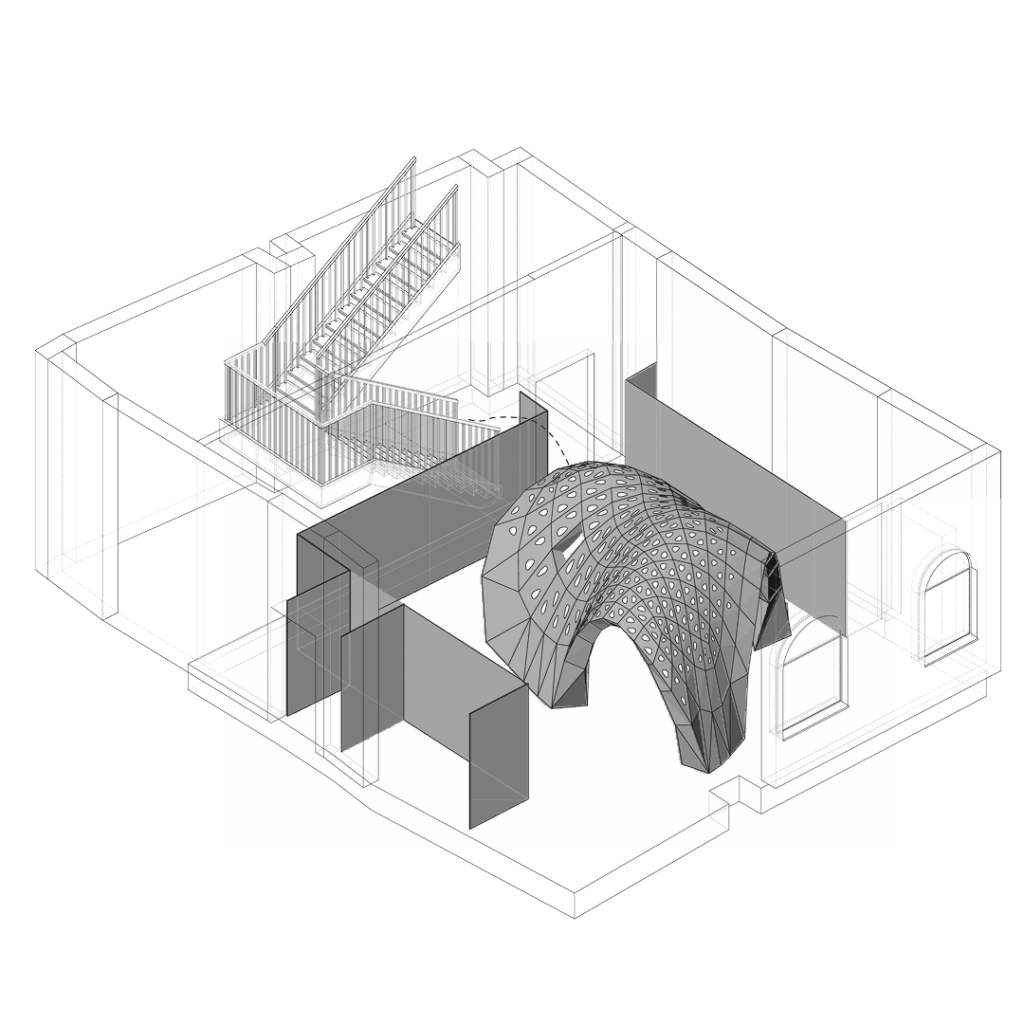
A New Construction Model
The structure emerges from a generative design process, shaping its form based on parameters such as center of gravity, entrances, openings, and anchor points. The result is an architecture that interacts with its surroundings, creating an immersive and engaging experience for visitors.
During a three-day workshop, students and designers explored computational design tools, previously used in the Generative Circularity installation (Fuorisalone 2022), contributing to the creation of modular prototypes and the final structure.
Key Elements of the Installation
The installation stands out for its combination of solidity, lightness, and modularity, achieved through an assembly system that avoids glue or complex fixings. It is built using the Box System modular method, an interlocking assembly technique that allows for quick construction and disassembly without generating waste.

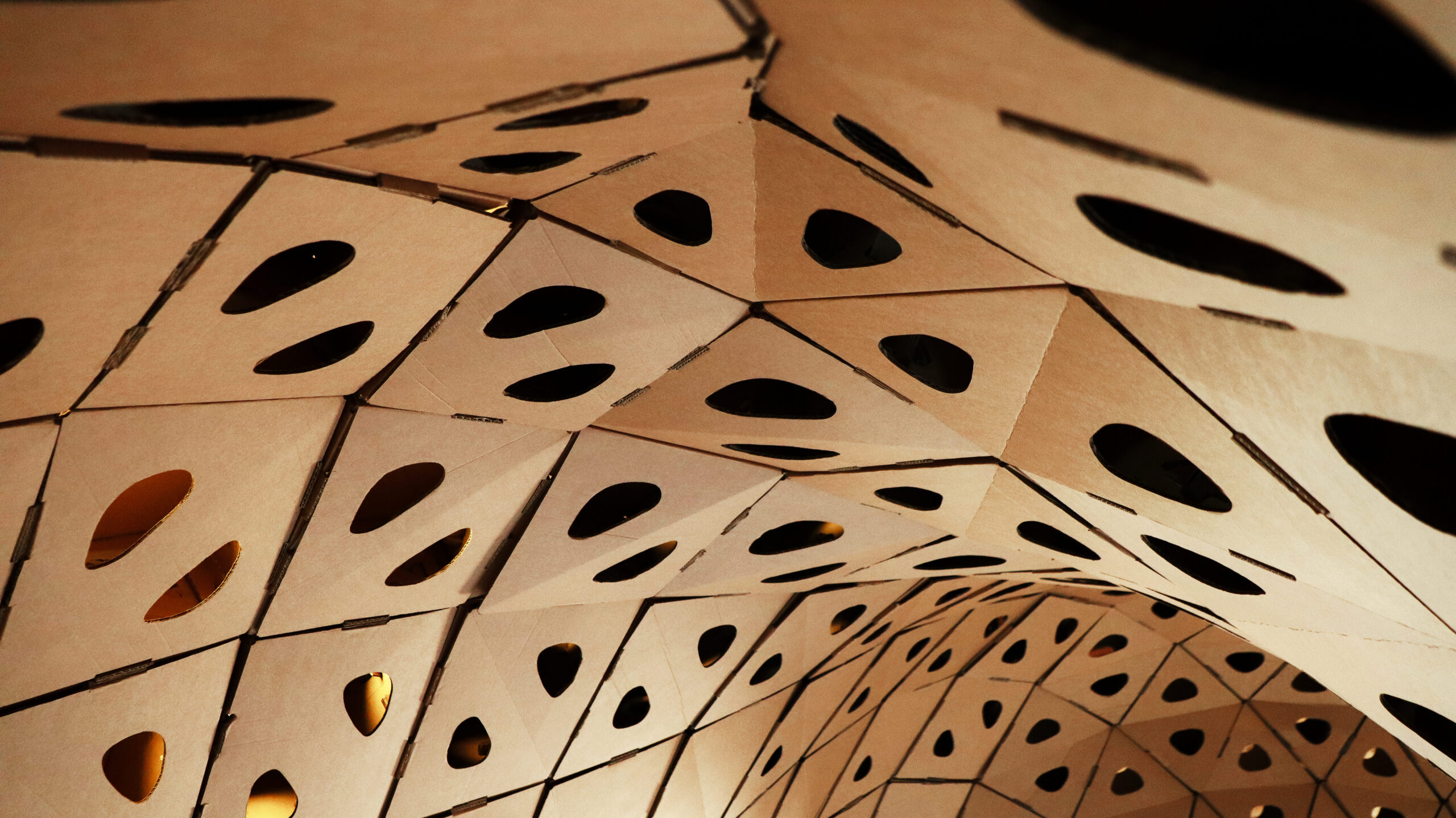
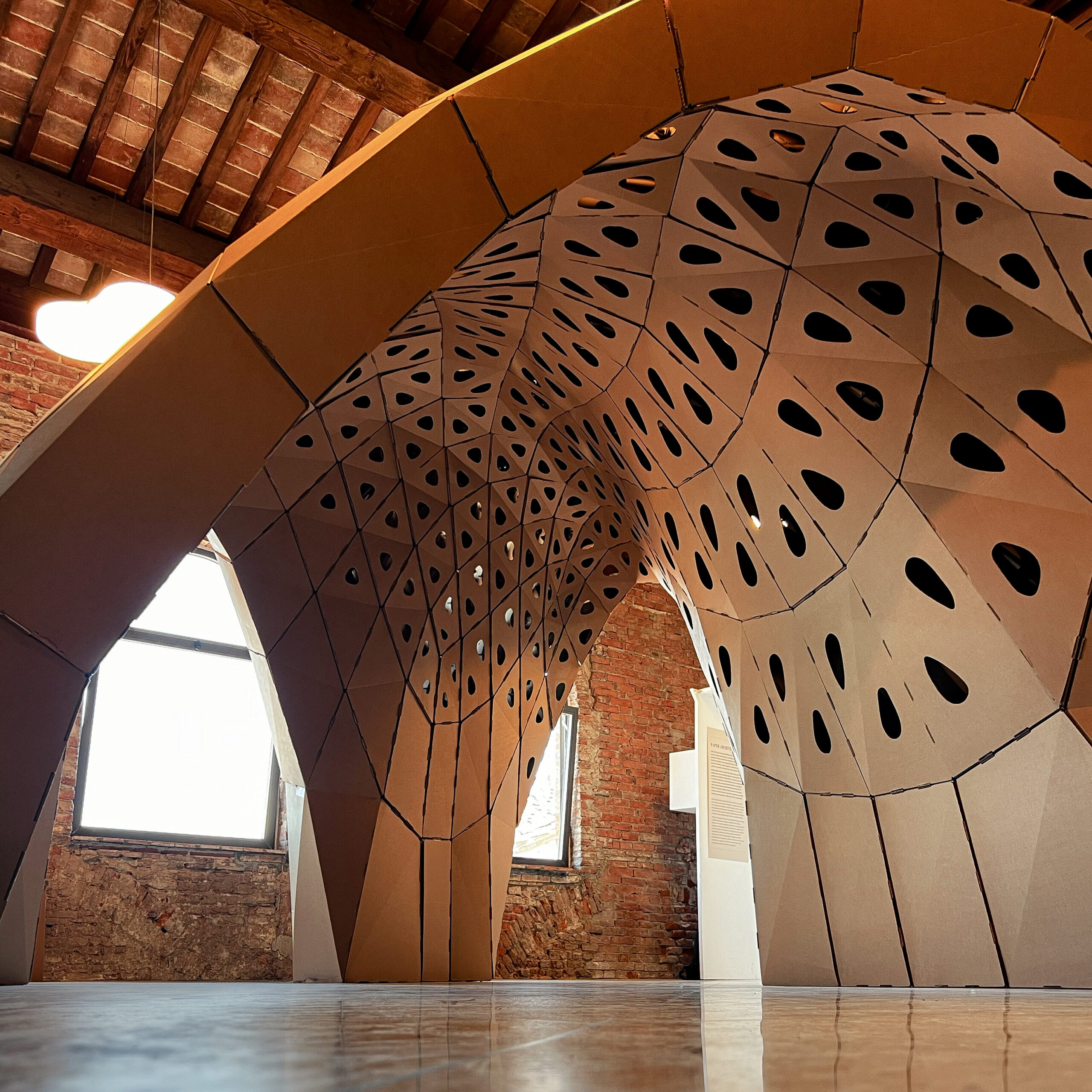
Precision digital cutting ensures optimized manufacturing, minimizing waste while maximizing material efficiency. The fluid shapes and perforated panels create a play of light and shadows, enhancing spatial perception and bringing the structure to life as a dynamic and lightweight architectural element. The choice of honeycomb cardboard is both aesthetic and functional: the material ensures structural strength while remaining fully recyclable at the end of its lifecycle.
More than just a formal design experiment, the installation represents a concrete model of reversible architecture, where each component can be reused, relocated, or adapted to new contexts.
A Project Recognized for Its Innovation
The installation received the YouBuild Award in the category of “Innovative Construction Processes”, recognizing its integration of computational design, modularity, and sustainability. A model of temporary architecture that not only explores new formal solutions but also paves the way for a more conscious approach to designing the future.
